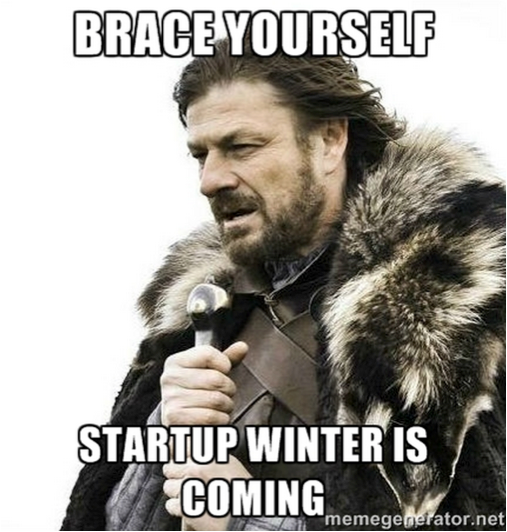
(Also published in USAToday)
It’s heady times for venture-funded startups in Silicon Valley, but everyone knows the shining summer of funding can’t last forever. In the past few weeks, I’ve heard several founders tell me “winter is coming,” usually when seeking to raise as much money as possible. It’s a sensible concern: while few founders experienced the dot-com bubble directly, everyone has heard the horror stories. Marc Andreessen has already predicted that the market will turn. And when it happens, it will happen quickly. Raising money will be easy one day and impossible the next. There are two schools of thought among founders on how to prepare: allocate prudently, or cash the largest checks your VCs can bring themselves to sign. Which should you do?
In my experience, the best founders treat each round as if it were the last they’ll ever raise — but they also plan carefully about how to use the money and keep their burn rates low. I’ve met many teams doing just the opposite, pitching for a $10 million round before even making a single sale. When I ask the founders why they want so much money so soon, they say two things: “Why not?” and “Winter is coming.” What I hear is “We’re afraid.” Continuing the Game of Thrones metaphor, these founders are using the money not as a sword, but as a shield to fend off tough decisions.
There are plenty of good posts out there that tell you how much money to raise, how your revenue should ramp up and what your burn should look like, and why raising huge amounts of money is bad for company culture. But the real lesson here goes deeper than tactics. What strategy will work when winter comes? The same one that works in all seasons: building a sensible, profitable business with a strong underlying product that satisfies an important need.
In George R.R. Martin’s classic series, “winter is coming” serves as a warning to the “summer children” who only know how to live with abundance. In winter, the soft ones will perish, and the warriors will live. Just replace “softness” with “high burn rate,” and the same holds for companies. Raising massive checks without a definite plan might give you a year-long cushion, but it also tempts your company to make profligacy a habit, lose track of its true core business, and put off the question of market fit until it’s too late.
That said, some companies simply need a mega-raise to maximize their expectations of success. When is a large raise justified? Here are the four questions I would ask:
1. During winter, what will the market look like?
If your product satisfies an important need, it will still be valuable to customers in lean times — and maybe even more so. Good products are evergreen.
2. Are all your major initiatives truly important?
One sure symptom of a mistaken mega-raise is pouring money into frivolous projects and just hoping for a hit. This leads to high burn and wasted time. Strong companies are willing to cut anything that isn’t core to the business, and good products can still deliver their primary value with a small core feature set.
3. Will the market still need you later?
Many startups work on solutions to transient pain points, which may be important at present but vanish a few years down the road. These companies are the metaphorical daylilies, bright and beautiful in their summer bloom, but inevitably short-lived.
4. Can you stay scrappy, even if you raise more?
This is the hardest question to answer because it is not a matter of product but of character and culture. Could you survive and keep delivering your core product if your runway were cut in half tomorrow? If so, your company is in good shape. In this case, you may want to minimize dilution by raising moderately even if you’re able to take more. When the winds of winter finally arrive, your company will look far more attractive than its bloated, fast-burning competitors. Staying scrappy is valuable no matter the season.
Sometimes the situation demands a larger raise, sometimes a smaller one — but no matter what, you should have a plan and prepare for the tough decisions. Far too many companies use their borrowed millions to postpone hard choices. All too often, when winter arrives and those choices come due, the company is already stranded far from shelter.
Entrepreneurs today have one huge advantage over those of 1999: it’s far easier to get real market validation. Hot startups usually expand too quickly for profitability, but as soon as they start selling they have a strong indication of whether their product can get them there. Raising a moderate initial round encourages your company to finish that experiment quickly, gaining valuable knowledge about your product-market fit. This attitude saves not only capital but, even more importantly, your precious time.
Uncertainty may be scary, but large amounts of capital are no defense. When preparing for winter, there is only one good way to tame the wildlings of chance: proper strategy and superb execution.
*Thank you for to Lucas Baker and Angela Kingyens for being generous with their thoughts and edits.